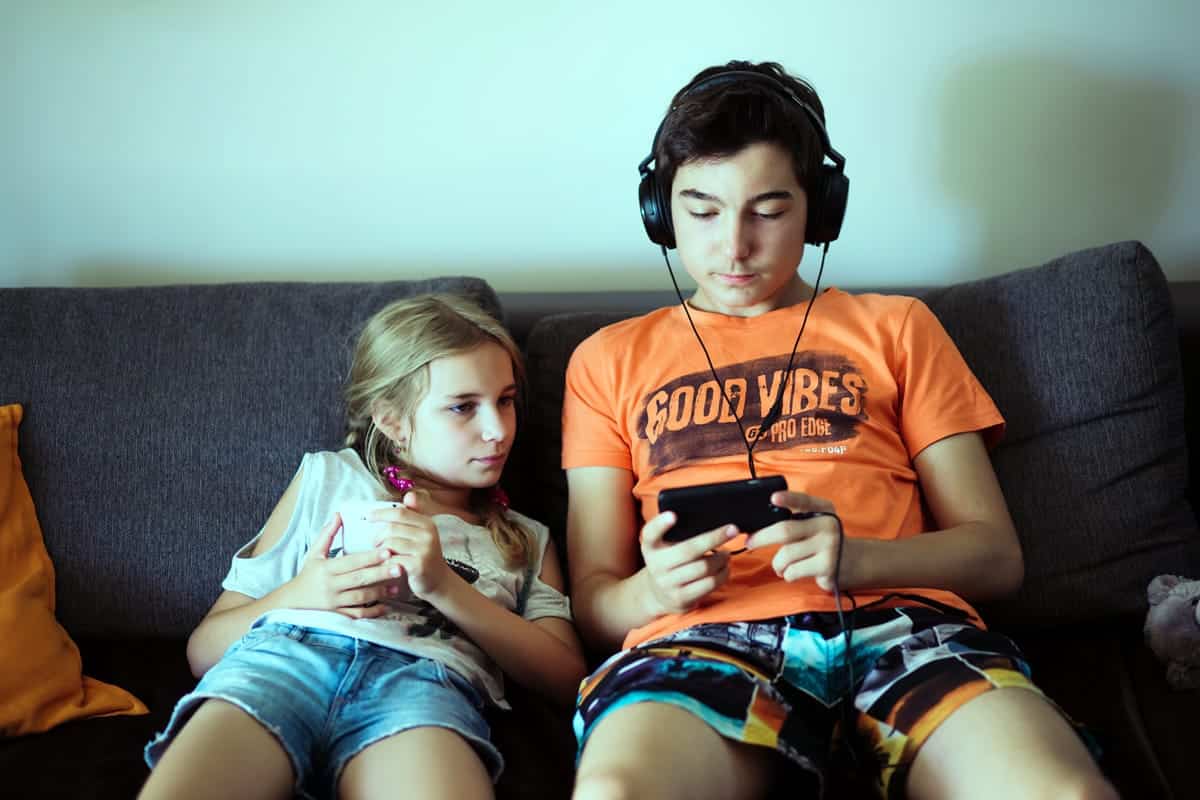Generation Z represents a huge opportunity for mobile app designers. As the first generation of true digital natives, they’re voracious app consumers — constantly connected, and always experimenting with new software. But they’re also tough mobile app design critics, who have grown to expect a flawless user experience. Here’s how to capture their attention and keep them hooked on your app.
Who are Generation Z?
Of all the things people argue about, the precise starting point of generations is one of the weirdest and most contentious. Generations disappear and reappear (remember when half of Gen X was Gen Y?) and shift by years in both directions — we’re still debating exactly who is and isn’t a Millennial almost two decades into the 21st century, so we probably won’t settle on an exact cutoff date for Generation Z for a while.

Depending on who you ask, Gen Z starts anywhere from 1993 into the mid 2000’s. 1995-1997 are common starting dates. They are defined in a lot of different ways. Most of them don’t remember the world before September 11th, which gives them a radically different view of America (and the rest of the world) than previous generations.
They are more media savvy and skeptical of big narratives like the American Dream, and (most importantly for us) extremely wired. Sometimes called the mobile generation, an estimated 96% of Generation Z own a smartphone, and 63% own a tablet. Most Gen Z’ers are online for at least an hour every day, and almost half spend 10+ hours connected.
All that time online makes them easy to engage with, but hard to retain. They interact with brands frequently, but aren’t loyal to them. They like social media attention (a lot!) but are very careful about what they say online. They grew up with their lives posted on Facebook by their parents, but are cautious about sharing personal information.
They also tend to defy a lot of the categories brands rely on. They’re not interested in strongly gendered design, or products that treat them as a “type.” They have fluid interests and identities, and they choose apps and products that address those interests. If you’re still thinking of categories like jocks, nerds, drama club kids, and preppies, it’s time to give that up. Gen Z define themselves — and they’re not interested in products that try to put them in boxes.
And perhaps most importantly for mobile app designers, they have high expectations and low attention spans. Generation Z has no patience for clumsy interfaces or long load times. If your app is broken — or even a little rough around the edges — you’ll lose them.
Mobile App Design: What Generation Z Likes
Positive, Fun Mobile Interactions
It’s always important to think about how people will actually use your app — not just how you want them to use your app. Create an app to look up friends, and people might use it to stalk enemies. Build a group communication app, and some groups might use it to team up and bully their victims. Playing out all the scenarios should be a part of any mobile app design process.

However, for Gen Z, the type of behavior your app facilitates or encourages is especially important. As a mobile generation who established their identity online, they’re well aware of the pitfalls and risks of digital life — like cyberbullying. Anonymous communication apps built with benign intentions can become toxic environments, which not only hurts your users, but can cause a backlash against your product. If you can design your mobile app with built-in safeguards that keep things fun and positive, you’re a lot more likely to retain a loyal following.
One great example is the app tbh. It’s an anonymous social app for teens. It launched in August 2017, and quickly rocketed to the top, becoming the #1 free app in the App Store — despite only being active in certain states. In fact, tbh earned 5 million downloads and was bought by Facebook in its first three months!
Tbh is hardly the first anonymous social app, and isn’t particularly feature-rich. In fact, it’s the restrictions that make it compelling. Tbh users interact with each other by taking a series of positive polls about their friends. The app quizzes users on which friend is the “World’s best party planner,” or “Who has the best smile?” When friends choose you, the app rewards you with gems which unlock new features. You also learn a few things about who the friend who voted for you such as what grade they’re in, but their actual ID remains anonymous.
There isn’t much more than that — it’s extremely simple by social app standards. But it’s fun, and it’s safe. By providing a mechanism for anonymous, positive interactions, the makers of tbh have scored a major win with Generation Z.
Gen Z Prefers Social Apps, and In-App Communication
People have been saying email is dying for years, but the numbers have never backed that up. In 2017, there were an estimated 3.7 billion email users, a number that’s expected to grow to 4.1 billion by 2021.
However, as Techcrunch points out, email use does appear to be dying among Generation Z users — or at least, in sharp decline. While older users still send a lot of emails, those between ages 13 and 24 spend far more times communicating with messaging apps, and less time in email than older users. So why are Generation Z so much more into mobile communication than older users? There are a few reasons.
One of them is that Gen Z and younger Millennials see their mobile devices a little differently than the rest of us. For older users, a smartphone or tablet is kind of like a little laptop (with some neat extra features thrown in). When we want to look for something, we pull up a browser. When we want to communicate, we’re more likely to type out an email. We use apps, of course, but they’re not necessarily where we start.

But Generation Z are far more comfortable with modern mobile app design than the older mouse/keyboard/browser paradigm. They grew up with apps, and they’re more likely to do everything with apps.
Another factor is that Generation Z just have very different preferences in how they communicate overall. For older users, Facebook is kind of a central gathering place. You add pictures, chat, update your friends on what you’re doing, connect with brands, read news stories and so on. Email is where you go for more serious communication, and on top of that, you might use a messaging app or two to send casual messages.
Gen Z are different. They don’t see the need for a central gathering place, and prefer a variety of different, more specialized apps. Many are abandoning Facebook or never signing up in the first place (although Facebook isn’t in any danger yet). They tend to heavily prefer Snapchat to keep up with friends, but they also post on Instagram, Twitter, Tumblr, Pinterest, and various other apps.
One message mobile app designers can draw from this is to move away from general-purpose and text-heavy apps to more novel, specialized mobile app design. Your users are probably going to continue moving away from long, pseudo-blog posts like Facebook, and towards new, slick tools that use images, ratings, video and voice.
This has some major implications for mobile app design even if you’re not building social apps. Gen Z don’t want to fire off an email to give you feedback — to them, that’s slow and clunky. They’ll always prefer if you give them easy ways to interact with you in-app, even if those interactions aren’t as feature-rich as email. That’s obviously not practical for all apps, but it is something to keep in mind. Because for Gen Z, mobile UX is more crucial than ever
Flawless Mobile App Design
Imagine you’re at a dealership, looking to buy a car. The dealer shows you a model that he insists is perfect for you, and you decide to take it for a test drive. Only, when you try to open the door, nothing happens.
“Oh that,” said the dealer. “It’s designed a little differently — just yank it down while twisting, and it will work like a dream.”
After a few tries, you get the hang of it, climb in, and look in front of you. The dashboard is completely different than anything you’ve seen, and it takes you half a minute just to find the speedometer. You’re feeling a little frustrated that nothing is where you expect, but you figure you’ll at least turn it on. Only, when you try to start it, nothing happens.
“Don’t sweat it,” the dealer says. “Sometimes, it starts a little slow. Just wait a few seconds.”
By this point, you’d probably roll your eyes and find a different car — at a different dealership. All of these weird design choices and glitchy behaviors read as warning signs to you. You just want a car that works how cars are supposed to work, the first time you try it.

You probably see where we’re going with this. Generation Z have the same high expectations for their apps as you do for your car. All users tend to shy away from clunky and poorly designed apps, but Gen Z have less patience than anyone. They don’t want to have to click and drag something that they could push with their thumb, they don’t want to navigate two menus when one would do, and they don’t want to wait.
How to Design Mobile Apps for Generation Z
People tend to make a big deal about generational changes, but in a lot of ways, Generation Z are just continuing trends we’ve seen from years. There’s the move away from clunky, browser-based interactions to a sleek, mobile-first approach, the viral popularity of fun, simple apps and the focus on usability above all else.
And just like always, there’s an element of chance. It’s hard to predict whether your app will be a runaway hit or a total dud — you just have to get it out there and see. However, there are some important design considerations for Gen Z.
Test Obsessively
Generation Z have different expectations from apps. A user flow that might seem relatively straightforward for an older user can strike a member of the mobile generation as frustratingly inefficient.
You need to be thorough with your testing, and get detailed feedback from your users from mobile app prototyping through user acceptance testing. And you need to listen to your audience, too. Take feedback seriously and graciously, and accept that the way you’ve always done things might not be the way that works for your younger users.
Don’t Aim for Forever — Aim For Now
Generation Z users are fickle. They’re quick to try apps and quick to delete them, and they tend to use more apps, but with shorter sessions than older users. It’s alright to be a passing fad — most successful apps will be. Think shorter technology cycles and simple apps that emphasize positive, fun user interactions.
Understand How Gen Z Find Apps
Generation Z live online, and they’re more interested in what their friends think than what a reviewer tells them. According to a recent study, 62% of Gen Z users found out about the last app they installed from a friend. The second most common source — Facebook and Instagram ads — only accounted for 9%.

Your mobile app design and marketing need to incentivize referrals whenever possible. You don’t necessarily have to straight out offer free bonus content or features for recommending a friend, and that might not be the best approach. Gen Z users are wary of brands, and often don’t respond well to the hard sell. A better approach may be baking in social interactions. Let your users share what they did in the app, or create avatars they can show off to their friends. Feature user-created content if it’s relevant, or simply build apps that are more fun to use with a group.
Generation Z Love Great Mobile App Design
Gen Z have their own tastes and pose their own challenges to developers and designers, but they’re not as different as the tech press would have you believe. Keep trying new things, listen to your users, and take the time to get it right. The future is brighter than ever for mobile app design!
Proto.io lets anyone build mobile app prototypes that feel real. No coding or design skills required. Bring your ideas to life quickly! Sign up for a free 15-day trial of Proto.io today and get started on your next mobile app design.
Got a great tip for reaching younger users? Let us know by tweeting us @Protoio!





